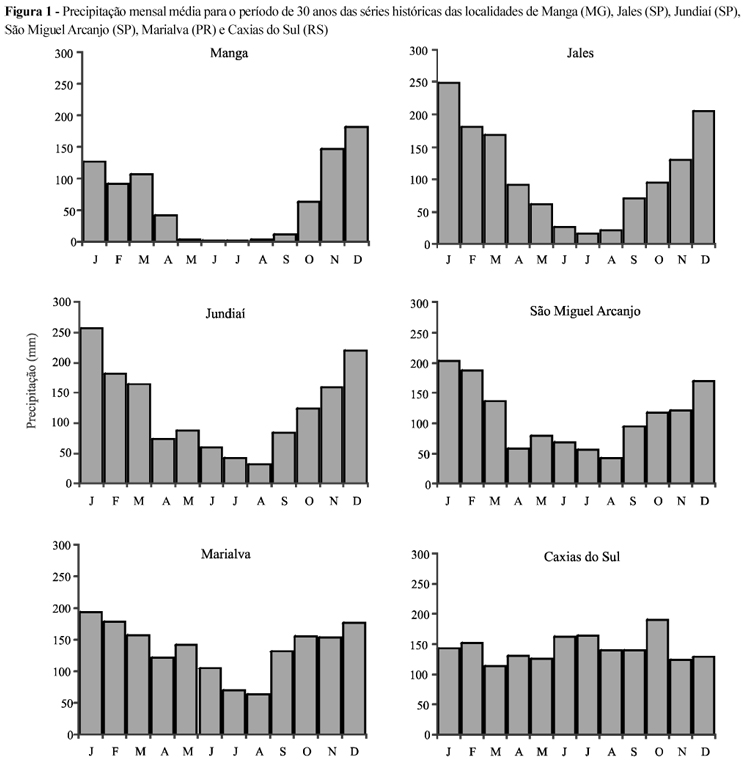The occurrence of fungal diseases in the grapevine is strongly influenced by climatic conditions. In Brazil, the grapevine Vitis labrusca, is grown in several regions, from Rio Grande do Sul to the north of Minas Gerais, which present distinct climatic conditions therefore requiring different strategies for the control of fungal diseases. Based on that, the aim of this study was to determine climatic risk in the occurrence of fungal diseases in different productive regions of the South and Southeast of Brazil, using a prediction model for spraying, based on rainfall occurrence. In order to do this, daily rainfall data from the regions of Manga (MG), Jales (SP), Jundiaí (SP), São Miguel Arcanjo (SP), Marialva (PR) and Caxias do Sul (RS), taken from a thirty-year time series were used. The number of sprays was determined using the calendar (NScalendar) and rainfall (NSrainfall) sytems, as a function of the duration of every harvest cycle for each location, as related to the pruning periods. In Caxias do Sul, where rainfall is more abundant and better distributed, the RC [= (NSrainfall / NScalendar)*100], varied from 50 to 55% for pruning dates from August to September, whereas in the Manga region, the RC ranged from 1% for pruning carried out in May to 24% for pruning in February. In the remaining regions, the RC values were between 16 and 56%, demonstrating that the risk of occurrence of these diseases varies with the weather, and that the monitoring of weather conditions can help in a rational recommendation of spraying frequency in the control of fungal diseases in the grapevine Vitis labrusca.
Grapevine; Plant diseases and pests; Vegetation and climate











